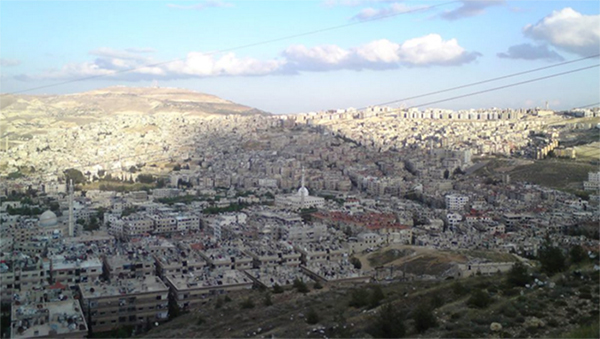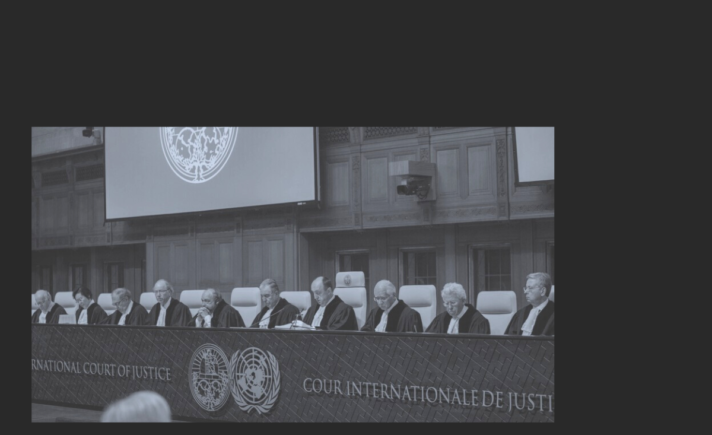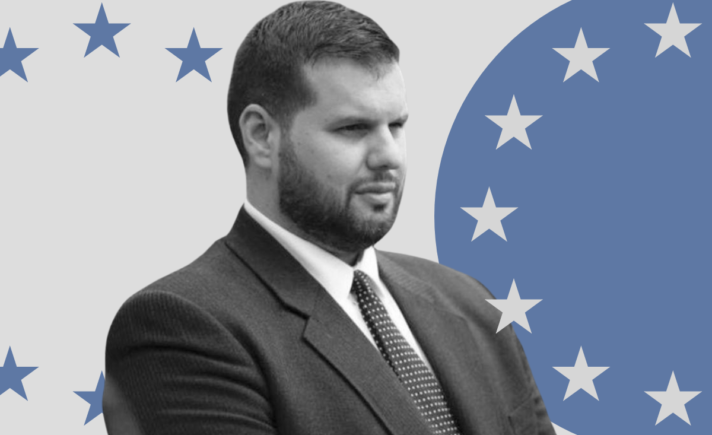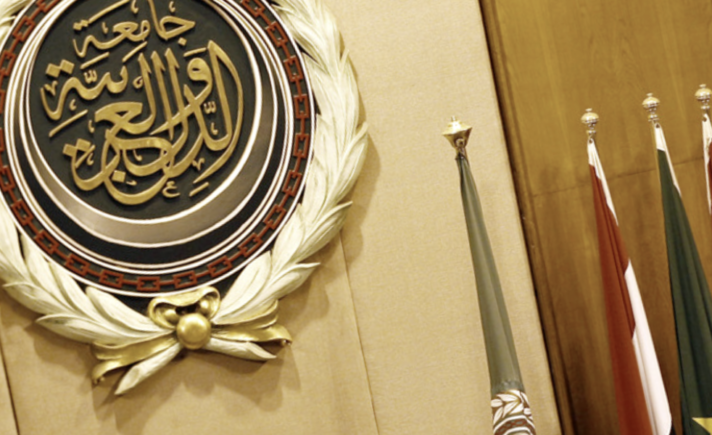[Editor’s note: The below article was produced as part of Al-Jumhuriya’s 2017 Fellowship for Young Writers. It was originally published in Arabic on 6 July, 2018.]
In the city of Qudsaya, about ten kilometers from Damascus and 45 minutes from the center of the capital, there is a walled area of approximately 5,000 square meters. Today, around 140 children are confined within its perimeter. They are the inmates of a juvenile prison that has witnessed all the stages of the Syrian war in the city.
The Qudsaya name began appearing on television in 2011. It was linked to the early demonstrations in the city, which was one of the main towns of Western Ghouta to rebel against the Bashar al-Assad regime. Later, Qudsaya became a site of clashes between regime forces and the opposition factions that had taken control of large parts of the city before the regime imposed a deadly siege on it in October 2013. The siege ended with the regime taking over the city in the fall of 2015 after displacing large numbers of its residents.
The juvenile prison in Qudsaya, officially called the Khalid ibn al-Walid Institute, was founded in 1976. According to its internal regulations, it “aims at reforming delinquents and providing them with what they need in life, including primary education, vocational training, and an intellectual, moral, and physical education, in addition to developing their nationalist sentiments in order that they become upstanding citizens.” I was able to enter the Institute while, of course, concealing my identity as a journalist.
The entry tariff: one assadiyye
When entering the prison, the first stop is the police station, which is under the authority of the Ministry of Interior, and is the main security force responsible for protecting the prison.
An officer asks a woman visitor, “What did you bring us today?”
The woman, who is in her fifties, answers, “Two cans of maté [herbal tea] and a box of halawa [a flour-based confection], as you asked.”
The officer ruffles through her bag, then looks at her in astonishment. “What is this? Electronics are forbidden,” referring to a video game she is carrying.
The lady places 500 Syrian pounds (US$1) in the officer’s hand and says, “Let it go.”
The police officer replies, “That won’t happen without an assadiyye,” meaning the 1,000 Syrian pound (US$2) note with the late Hafez al-Assad’s picture on it.
The lady takes another 500 pounds from her pocket and places it in the officer’s hand. “Here’s a second one, now it’s an assadiyye.” The officer lets her through.
This being my first time inside the juvenile prison, I was surprised to see this transaction taking place in the open. I approached the lady and asked her in a low voice, “What if the administration knew about this? Or if someone here told them?”
“It makes no difference. I’ve become used to this charade. Everyone knows we pay the police, and if the policeman consents, no one can stop us, including the administration,” she replied as she was picking up her things.
Battles at the prison gates
The juvenile prison wasn’t outside the war zone; on the contrary, it was right on a frontline between regime-controlled areas on one side and opposition neighborhoods on the other. The war, accordingly, was an integral part of the memories of the imprisoned youths.
Outside the prison, I met Ziad, a 24-year-old who works in a shop in the capital, Damascus. When he hears the name Khalid ibn al-Walid, he immediately thinks of the juvenile prison. At the mention of this place, a smile blends with a look of sadness and shame on Ziad’s face.
“We could hear the sounds of artillery and heavy machine guns reaching us through the windows and the walls,” he recalls of his time in the prison. “Often the empty bullet cartridges would land in the prison courtyard.”
According to Ziad, the intensification of the fighting around the prison would always fuel political disputes among the adolescent detainees.
“Some would reveal confidentially to others that they belonged to the opposition, or that they had relatives or even a parent in the Free Syrian Army. Some would even swear that when the opposition brigades took over the prison, they would tell them to kill the police officers who abused detainees.” Then he adds, laughing, “But that never happened. At the same time, many detainees supportive of the regime would flaunt their loyalty and take pride in their connections among the state security services.”
Ziad continued, going through his memories: “We could identify the weapons by the sound they made. This was one of our pastimes, the detainees competing in guessing what the sounds were coming from, and discussions revolving around the types of weapons making this or that sound. Was it the regime’s or the opposition’s artillery? We used the word ‘outgoing’ for regime shells and ‘incoming’ for opposition shells or for the shells that fell near us.”
The “displacement” to Adra
At the end of 2011, as opposition gunmen took over large parts of Qudsaya, the juvenile detainees were transferred to the Adra civil prison, about 40 km from the Khalid ibn al-Walid Institute.
Ziad put his hand on his forehead as he tried to remember. “At the end of 2011, I don’t recall the exact time, but it was around the beginning of winter, one day in December, we were ordered to gather in the courtyard and we knew then we’d be transferred to the Adra central prison, which is controlled by the regime. We boarded the buses. It was evening time and light rain was falling. Fear of what was to come was our biggest concern. Suddenly, our differences dissipated and were replaced by an esprit de corps as we all faced the unknown on our way to a prison where real criminals were held. None of us considered ourselves criminals, despite the sentences we received. We thought what we’d committed was mischief, like the pranks we used to pull in school, except that we were unlucky and got caught and now had to spend some time in the juvenile prison until we’d served our sentences and were free to leave and return to normal life.”
“Now, however, we were going to meet real criminals. We imagined them to be like the characters we saw in movies, so we decided to stick together. The rain was getting heavier, the gates of the giant prison opened like those of historic castles. One of the police officers came up to our bus and said, ‘Alright kids, come down from the bus, one by one.’ We realized then that we were kids again.”
What changed after the move to Adra? We put this question to many of those who were moved from Khalid ibn al-Walid to Adra, including Muhammad, who is now 24. We entered the photography studio where he works in al-Bahsa, a neighborhood in Damascus, and spoke to him.
“What I remember the most from that period is the fear,” he said. “Adra prison was a horrific place for us. In Khalid ibn al-Walid, we were kings. We knew the place down to the smallest detail. When we moved to Adra, the authorities were keen on not letting us mix with those imprisoned by the state security services and with political prisoners, so we were placed with drug traffickers and murderers. For us, the Adra prison was a life we were afraid of, a place much bigger than anything we were used to.”
The detainees remained in Adra prison for about six months, until the regime reached an agreement with the opposition factions that controlled parts of Qudsaya, to the effect that the juvenile prison would remain under its control. Thus the detainees returned to their first place of detention, the Khalid ibn al-Walid Institute.
Lack of care and widespread corruption
The prison, which, per the Ministry of Social Affairs and Labor, is officially branded an institute for the rehabilitation of juvenile delinquents and the ensuring of their proper reintegration into society, was in reality something very different.
The institute includes hangars housing smithery and agriculture workshops and sport areas. Activities are supposed to be supervised by specialized trainers, and there are supposed to be scheduled work activities and training sessions, in addition to the taught curriculum. But when talking to staff members outside the prison, we learned that activities have stopped since the end of 2011 in these hangars, and that some of them were looted and vandalized following military operations.
Baraa, a 36-year-old administrative employee at the prison, said the Institute’s golden age was between 2002 and 2008, when Mohammed Saada was its director. According to Baraa, “Not only did the institute teach handicrafts, but there were also agricultural laboratories supervised by specialists, with plans to expand those laboratories. But later on, the administration began to lose interest in these projects, and then the war broke out and the activities fell to only about 15% of their previous level.”
The decline of education standards and lack of care for the institute, which the staff blamed on the administration, are not the only issues in the prison. There are many more problems not disclosed by the staff.
The prison/institute is under the authority and management of the Ministry of Social Affairs and Labor, which is supposed to fully supervise its activities, secure a budget for the staff and specialists, as well as for the tools and equipment needed for the prison activities. However, according to sources inside the prison, since 2010 the ministry has contracted NGOs to carry out these activities. This saves the ministry the expenses it previously spent on employees and specialists, by transferring the costs to the organizations.
Detainees inside the juvenile prison also complain of food shortages, with each person receiving no more than 100g of pasta, 100g of rice, and a small amount of thyme. The shortage is due to a lack of rations sent by the ministry, even though its warehouses are full of food according to the people in charge of supply inside the prison.
This shortage leads to a rise in the demand for and sale of food. Prison supervisors buy whatever the detainees need and sell it to them, adding a commission. These transactions are reason enough to keep quiet about the detainees’ demands for an increase in food rations.
Fear and drugs in prison
There are more problems inside the prison. They include a lack of safety, and a prevalence of mental illness, with a paucity of specialists available.
“It’s not just the lack of psychologists in the Institute. The problem is much more complex, and if it’s not disclosed and addressed, things will get worse,” says Rasha, an employee with one of the organizations active in the prison.
According to Rasha, and based on her observations and interactions with the young detainees, “hashish and Captagon pills are widely available in the Institute, with 50 out of 150 detainees being regular users of these drugs.”
Rasha doesn’t rule out the possibility that some of these detainees are linked to organized networks operating in drug dealing and possibly human trafficking. This is due to the ill-treatment the detainees endure inside the prison, as well as the fact that they return home for two days each week, during which time they are unsupervised and susceptible to recruitment by criminal organizations; hence the considerable and alarming proliferation of drugs.
There is a defect in the law itself. Driving without a license, for example, is punishable by detention in the juvenile prison, where the detainee comes into contact with serious offenders such as murderers, drug traffickers, and thieves. The prison thus corrupts the inmates further, rather than reforming them, not least given the sub-standard counseling programs at the Institute.
According to accounts that reached Al-Jumhuriya from sources that will be kept anonymous, the smuggling of drug pills is sometimes carried out by the detainees themselves during their comings and goings in and out of the prison. They hide the drugs in their clothes after bribing the police to ensure they don’t get searched. In most cases, drugs, hashish, tobacco, and mobile phones enter the prison through a number of supervisors in agreement with police officers. (We were unable to independently verify these claims.)
Another matter that causes psychological harm to the detainees, preventing them from re-integrating into society, and increasing their aggression, is solitary confinement. According to Rasha, there are several cases where detainees spent fifteen days in solitary confinement due to disagreements with a supervisor or for disobeying orders. The easiest way to discipline them, from the point of view of the prison administration, is this cruel and psychologically harmful punishment.
The environment of fear prevailing over the juvenile prison has led many detainees to attempt suicide, says Rasha. Bullying is also prevalent, as well as abuse and severe aggression, not only among the detainees themselves, but between the detainees and their supervisors. The latter are supposed to have a university degree in sociology, but in reality most have not even completed their intermediate schooling and are appointed by officers through networks of clientelism and patronage.
The psychologist also mentions cases of riots in the prison, including one last year on Eid al-Fitr carried out by 25 detainees who burned their clothes or cut themselves. Rasha explains this behavior as a consequence of the lack of attention and care.
According to a number of volunteers who worked inside the prison, the center’s administration received a budget to install surveillance cameras inside all the rooms and corridors in 2016. However, six days after the installation of the surveillance network, which cost about 2m Syrian pounds ($3,900), it was sabotaged by unknown individuals, who cut the wires connected to the headquarters. Several volunteers said the director of the center ordered an investigation but it was prevented under pressure from senior security officials.
Some of the juvenile detainees were arrested because of their political activities or their connections to the revolution and the war. Sources from inside the prison say there are about twelve detainees accused of terrorist activities; some of them arrested during security raids, others during military operations. These detainees are prevented from going home on weekends and there is no specific time set for their release, which will only be determined when their cases reach the terrorism court, which in turn depends on the money their parents pay to speed up their trial.
Inside the walls of the Khalid ibn al-Walid Institute for the Rehabilitation of Delinquent Juveniles, fear, addiction, and the effects of war are thriving. These conditions will inevitably leave their marks and scars on the memories of the detained adolescents. Outside the prison walls, difficult social, economic, and political conditions await them; conditions that will not assist them in resuming their lives in peace.





